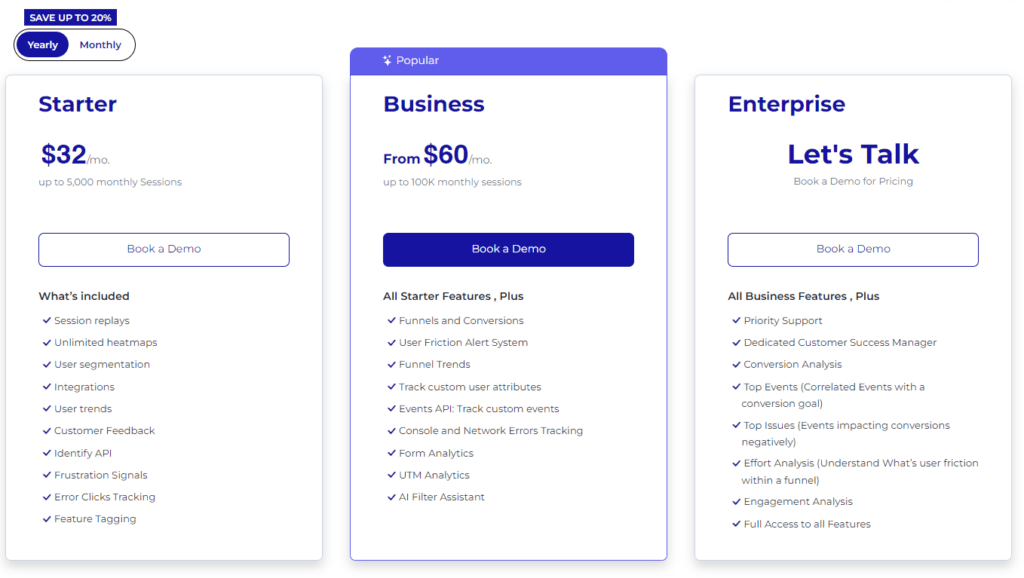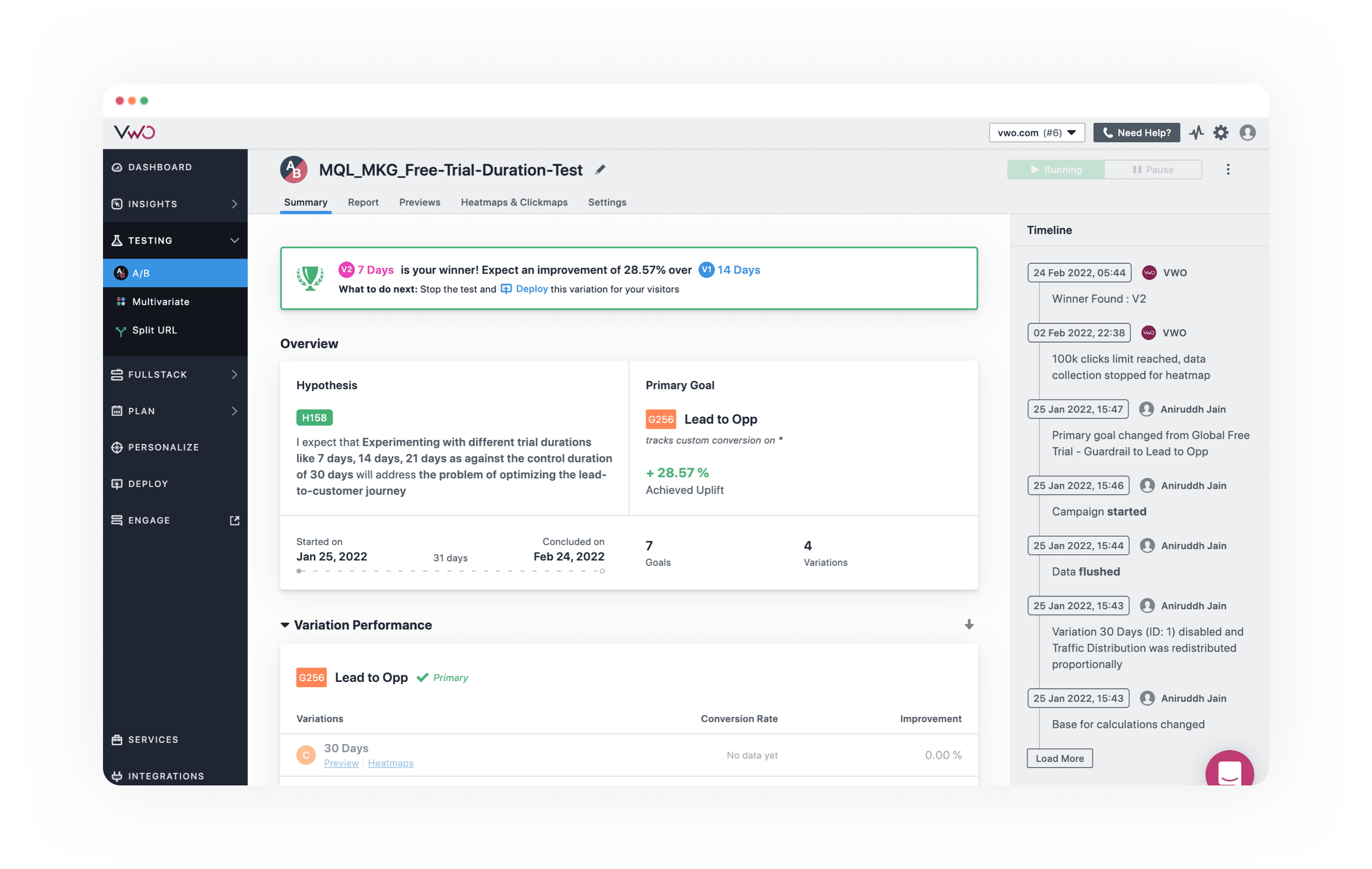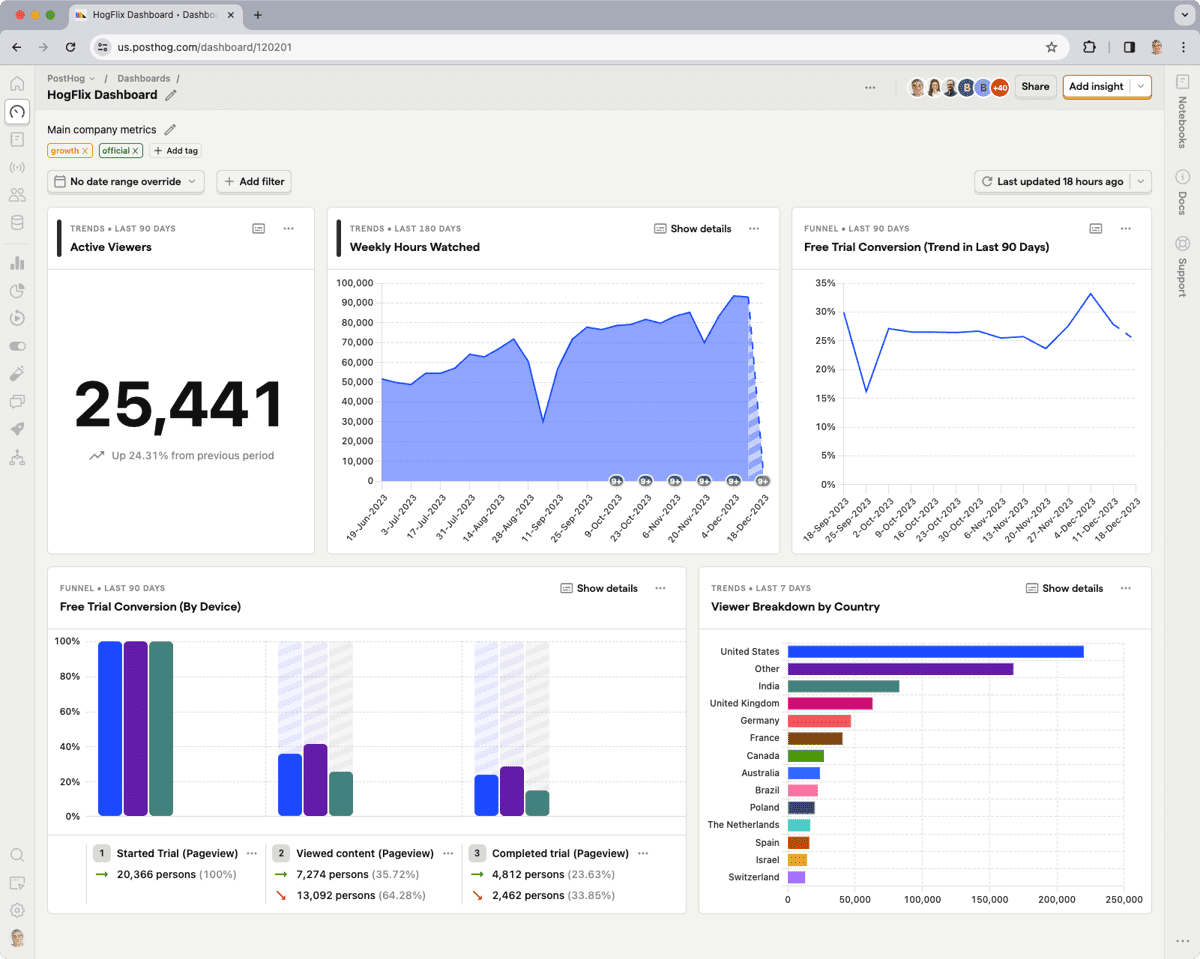Are you looking to optimize your website's performance but unsure if VWO is the right choice? You're in luck! We've compiled...

Categorical vs Quantitative Data: How Are They Different?
Data collection and analysis is the starting point of every effective marketing campaign. Do you want to refine your ideal customer profile? Create more personalized marketing strategies? Or find out exactly what motivates them to buy?
Whatever the case may be, customer-centric marketing should start with data. But what kind of data do you need?
Data can be classified into two main categories: categorical and quantitative.
In this guide, we'll dive deep into the definition, benefits, and applications of each category, as well as their key differences. At the end, we'll also talk about how to collect categorical and quantitative data.
What is Quantitative Data?
Quantitative data revolves around numbers and measurable details, which is perfect when you need exact figures to back up your insights. This type of data is all about precision, recorded in numerical form, which reduces bias because it remains constant no matter who is measuring.
It’s a key tool for statistical analysis because it makes it possible to spot trends, deduce patterns, and make predictions with a high degree of accuracy. Plus, it can handle both small and large data sets, which is why it is incredibly versatile for broad applications.
Common examples of quantitative data include:
- Age
- Income
- Height and weight
- Temperature
Types of Quantitative Data
Quantitative data can be classified into four main categories. Each type is unique in how it can be measured and analyzed, which offers different insights depending on what you're studying.
1. Continuous Data
Continuous data can take any value within a given range. This type isn't limited to specific numerical values and can include fractions and decimals. You can get infinitely precise measurements, depending on how fine-tuned your measuring tool is.
Examples of continuous data include temperature, time, and height.
2. Discrete Data
Discrete data, on the other hand, consists of distinct and separate values. This type of data is countable in a finite amount of steps, and each step is distinct and separate—no in-betweens.
Anything that needs to be counted as a whole can be an example of discrete data, such as a student in a classroom, a car in a parking lot, or books on a shelf.
3. Interval Data
Interval data is a type of continuous data that includes measurements where the intervals between values are meaningful. The key feature of interval data is that it doesn't have a true zero point.
This means while you can add and subtract values, operations like multiplication and division aren't valid because the zero point on an interval scale is arbitrary.
Common examples of interval data are temperature in Celsius or Fahrenheit and the time of day on a 12-hour clock. The difference between 20°C and 30°C is the same as between 30°C and 40°C, but 0°C does not mean the absence of temperature.
For the latter example, 10:00 AM to 12:00 PM represents the same interval as 2:00 PM to 4:00 PM, but 0:00 doesn’t imply 'no time'.
4. Ratio Data
Ratio data is similar to interval data in that it has meaningful intervals. However, it also features a true zero point. This point makes it possible to perform all arithmetic operations, including meaningful multiplication and division.
Ratio data allows for the comparison of both differences and relative magnitudes. Examples include data such as weight, age, and height.
Pros of Quantitative Data
Quantitative data can be incredibly valuable for a lot of reasons, including:
- Straightforward and trustworthy: Numbers are straightforward. They provide clear, unbiased facts that are easy to trust because they’re less open to personal interpretation.
- Great for analysis: With numbers, you can dive deep into stats to spot trends, figure out what’s linked to what, or see if something causes another thing.
- Widely applicable: You can often use numbers from a small group to guess things about a bigger crowd, which is really handy in areas like public health or market trends.
- Clear-cut evidence: Quantitative data gives you hard evidence to test out theories and check if your guesses hold up under scrutiny. Plus, it lets you keep things under control while you experiment.
- Easy to share: It’s relatively easy to turn numbers into charts or graphs that make your points clear to everyone, whether it's in a report or a presentation.
Cons of Quantitative Data
While quantitative data can be very easy to use and have a lot of applications, it's not without its downsides. Potential pitfalls of quantitative data include:
- Misses the why: Quantitative data is great at telling you how many or how much, but it’s not so hot at telling you why things happen. This can leave out important details about people’s reasons or feelings.
- Can oversimplify: By aiming to make broad generalizations, you might miss the complex, subtle stuff about human behavior and social patterns, which could lead to conclusions that aren’t quite right.
- Can be pricey and slow: Gathering a bunch of numbers, especially through surveys or experiments, can take a lot of time and money, which might be tough for smaller projects or teams.
- Not so flexible: Once you’ve started collecting your data, it's hard to change your approach if you stumble on something unexpected or want to explore a new angle.
- Complex stats: Using statistical methods is powerful, but it can get pretty complex. If you’re not careful or if you mess up the math, you could end up with wrong conclusions, which could throw everything off.
When Do You Use Quantitative Data?
Quantitative data is your best friend when you're looking to make decisions that need to be backed by hard evidence. Here’s a breakdown of when it’s particularly useful in marketing:
Assessing Market Size and Share
When you're sizing up the market, quantitative data is your best bet. It helps you understand just how many potential customers are out there and what slice of the market you can realistically capture.
This is crucial for forecasting sales, planning inventory, and setting realistic growth targets.
Tracking Marketing Performance
Numbers don’t lie when it comes to figuring out how well your marketing campaigns are doing. You can use quantitative data to monitor everything from web traffic and click-through rates to social media engagement and ad conversions.
Each quantitative variable helps you see what’s working and what’s not and how to adjust your strategies for better results.
Consumer Behavior Analysis
Want to know how often customers buy your product, which demographics are the most loyal, or how price changes affect sales? Quantitative data gives you the insights you need.
It can help you identify buying trends, spending habits, and other patterns that can inform product development and targeted marketing strategies.
A/B Testing
Quantitative data is essential for A/B testing, where you compare two versions of a campaign to see which one performs better.
By looking at clear metrics like conversion rates, you can make informed decisions about the elements of your marketing strategies, from email subject lines to landing page designs.
ROI Measurement
Understanding the return on investment (ROI) for your marketing activities is crucial, and this is where quantitative data shines.
Crunching numbers on costs versus benefits can help you figure out which activities are worth investing in and which ones might need to be dropped or tweaked.
Competitor Analysis
Quantitative data helps you keep an eye on your competitors by analyzing market shares, pricing strategies, and other measurable aspects.
Numerical data can inform your competitive strategy, helping you find a niche or take advantage of a competitor’s weak spot.
What is Categorical Data?
Categorical data refers to information that can be sorted into categories or groups. Unlike quantitative data, which deals with numbers and amounts, categorical data is all about characteristics and qualities.
It’s used to label or describe attributes of a sample, such as types, names, or classifications.
Categorical data is particularly useful for identifying patterns or trends within specific groups, which is why it's often necessary in fields like marketing, sociology, and public health, where understanding how different segments of the population vary is crucial.
In marketing, common categorical variables include:
- Marital status
- Gender
- Preferences
- Attitudes and behaviors
Types of Categorical Data
Categorical data can be split into two main types, each with unique characteristics that dictate how they can be used in data analysis and interpretation.
1. Nominal Data
Nominal data is the simplest form of categorical data. It involves categorizing data without any intrinsic ordering to the categories.
The labels or names used for nominal data are purely qualitative and are used to distinguish one group from another based on some kind of attribute or characteristic. The key point with nominal data is that the categories cannot be ranked or ordered in any meaningful way.
A good example of a categorical variable can be blood type, gender, zip code, or color.
2. Ordinal Data
Ordinal data, on the other hand, involves categories that have an inherent order or ranking among them, but the intervals between the ranks may not be equal or even known. This type of data is more informative than nominal because the order of the values adds an additional layer of information.
Examples of ordinal variables include educational attainment, customer satisfaction, and socioeconomic status.
Pros of Categorical Data
Categorical data is extremely useful when you're sorting through loads of qualitative information. Here's why it can be useful in your marketing data analysis:
- Cuts through the clutter: Categorical data breaks down complex info into neat categories. It makes information easier to digest and is great for creating clear charts and graphs.
- Makes qualitative data workable: This type of data can turn fuzzy qualities into clear-cut groups you can actually analyze with stats to spot trends and dig into patterns.
- Enhances comparisons: By neatly sorting data, it’s much easier to line up and compare different sets of stats, like seeing how various age groups responded in a survey.
- Keeps data manageable: Categories reduce the chaos of massive datasets by organizing them into simpler chunks, which makes everything easier to manage and less prone to errors.
Cons of Categorical Data
Categorical data is great for sorting things into neat boxes, but it's got a few drawbacks that you should keep in mind:
- Limited statistical analyses: With categorical data, you're working with labels, not numbers, so your toolbox for statistical analysis isn't as full. You can't dive into deeper metrics like means or standard deviations or complex mathematical operations, which can make your analysis shallow.
- Might miss the details: Sometimes categorical data is a bit too broad. If your categories aren't super precise, you might lose some important nuances and make your data less informative than it could be.
- Can be a bit subjective: Deciding how to categorize data can bring in a bit of personal bias. Different people might categorize the same data in different ways, which can mess with consistency and reliability.
- Tends to oversimplify: By its nature, categorical data groups individual differences into large buckets. This can hide the smaller, more intricate patterns that might actually be key to understanding what's really going on.
- Risk of bias: The way you set up your categories can lead to biased outcomes. If the categories are too broad or don’t cover all possibilities, your results might skew in one direction or another.
When Do You Use Categorical Data?
Businesses and marketers often use both categorical data and quantitative data to get a handle on customer behavior, market trends, and business operations. Here are some key situations where categorical data is particularly useful:
Market Segmentation
Categorical data is ideal for segmenting the market into specific groups based on characteristics like age, gender, or income level.
Segmentation helps businesses tailor their marketing strategies to target each segment so that the messaging resonates with the intended audience.
Brand Perception Analysis
Understanding how customers perceive your brand can be crucial for your marketing strategy. Categorical data comes into play when analyzing survey responses about brand attributes like quality, reliability, or value.
This data helps identify strengths and weaknesses in how the brand is viewed, guiding improvements in marketing efforts.
Customer Satisfaction Surveys
To gauge how happy customers are with your products or services, categorical data is used to categorize responses into levels such as "very satisfied," "satisfied," "neutral," "dissatisfied," and "very dissatisfied."
Analyzing this data provides clear insights into customer satisfaction and areas that require enhancement.
Product Feature Preferences
When launching a new product or improving an existing one, understanding what features are most important to your customers is key.
Categorical data can help categorize customer preferences for various features, which, in turn, can guide product development to align with customer demands.
What Are the Differences Between Quantitative and Categorical Variables?
Quantitative and categorical variables are like two different tools in a researcher's toolkit, each suited for specific types of data analysis.
Quantitative variables deal with numbers and amounts—things you can measure precisely, like height, weight, or the number of people in a room. You can crunch these numbers with all sorts of math operations to uncover trends, make predictions, or test theories.
On the flip side, categorical variables are all about grouping things based on characteristics or qualities, not numbers. Think of it like sorting things into buckets. These variables might label things like types of cuisine (Italian, Chinese, Mexican) or responses to a survey (agree, disagree, neutral).
While quantitative variables get analyzed with stats techniques that handle numbers (like finding averages or plotting graphs), categorical variables use methods suited for sorting and counting—like seeing how many people fall into different survey response categories.
Quantitative data is great when you need concrete numbers to back up your research, like in experiments or financial analysis. Categorical data, however, might be better when you're looking at traits or categories, perfect for when you're trying to understand market segments or social behaviors.
How to Collect Categorical and Quantitative Data
Collecting categorical and quantitative data can seem like a tricky task, but with the right approach, you can gather the info you need smoothly. Here's a straightforward look at how to do it:
Collecting Quantitative Data
- Surveys and questionnaires: Create survey questions that need numerical answers, like how old someone is, their income, or how often they do a particular activity. Use scales to convert more subjective info into hard numbers.
- Experiments: Set up experiments where you can measure results in numbers. For example, if you're testing a new medicine, you might rate its effectiveness on a scale from 0 to 10.
- Observational studies: Just watch and record. Count things like how many people pop into a store or how long they take to complete a task on your website.
- Secondary data sources: Dig into existing data sets like financial records or website stats—lots of numbers are already waiting for you. Of course, it helps to have a good data management system in place.
Collecting Categorical Data
- Surveys and questionnaires: Craft questions with multiple-choice answers, checkboxes, or dropdowns to categorize responses. Make sure your categories cover all possible answers and don’t overlap.
- Interviews and focus groups: You can gather loads of qualitative data from conversations, which you can then sort into categories based on what you’re collecting data for.
- Observation: Keep an eye out for behaviors or characteristics, and slot them into categories, like rating customer service as good, average, or poor based on what you see.
- Secondary research: Use data that’s already been sorted into categories from previous studies or reports. This can be a huge time-saver.
- Direct categorization: Sometimes, you might need to sort things yourself, like organizing books into genres or customers into their specific career niches.
Make Data Collection Effortless With FullSession
Categorical and quantitative data each have their own strengths and weaknesses. In marketing, however, you will need to use both if you want to get valuable insights.
Luckily, you can make data collection less of a hassle with FullSession. With web analysis, you can collect all the pertinent data you need to understand your customers better.
Try FullSession today and get access to multiple data collection tools, such as heatmaps, session recordings, and customer feedback tools.
FullSession Pricing Plans

The FullSession platform offers a 14-day free trial. It provides two paid plans—Basic and Business. Here are more details on each plan.
- The Starter plan costs $39/month or $32/year and allows you to monitor up to 5,000 monthly sessions with up to 6 months of data storage.
- The Business plan costs $75/month or $60/year and helps you to track and analyze up to 100,000 monthly sessions with up to 12 months of data storage.
- The Enterprise plan has custom pricing and offers customizable sessions plus full access to all features.
Start Analyzing Categorical and Quantitative Variables Today
It takes less than 5 minutes to set up your data analysis tools with FullSession, and it's completely free!
FAQs About Categorical and Quantitative Data
Can quantitative and categorical data be used together?
Absolutely! Combining both types of data can provide a more holistic view of a situation. For instance, in market research projects, quantitative data might tell you how many people bought a product, while categorical data can tell you which demographic groups preferred it. This synergy allows for more nuanced insights and strategic decision-making.
Which type of data is easier to collect?
Generally, categorical data is easier to collect as it often involves simpler methods like observations or surveys where respondents choose from predefined options. However, ease of collection can vary widely depending on the scope of the study and the tools available.
What are the common mistakes made when analyzing quantitative and categorical data?
One common mistake in analyzing quantitative data is misinterpreting correlation as causation — just because two variables move together doesn't mean one causes the other. For categorical data, a typical error is overgeneralization from small or non-representative samples, which can lead to biased conclusions about broader groups.




